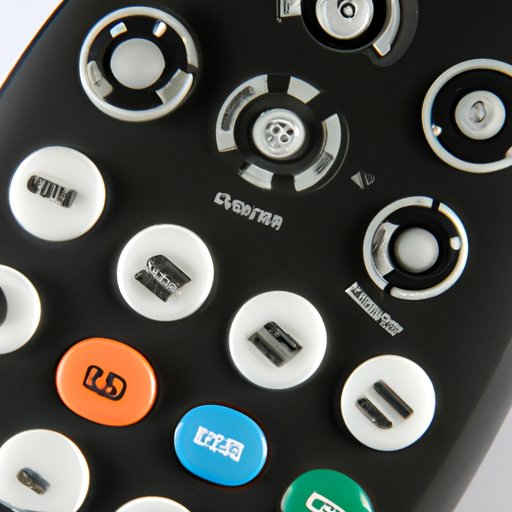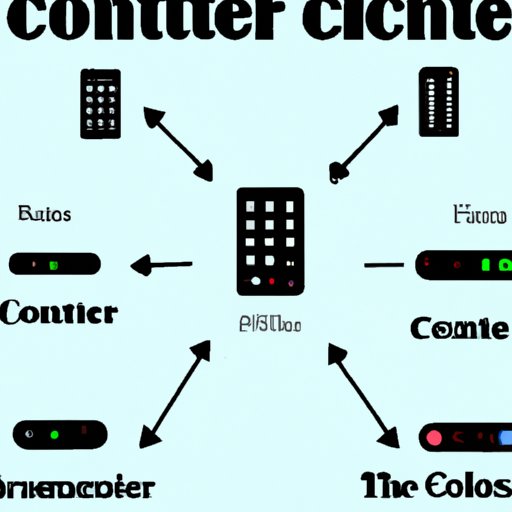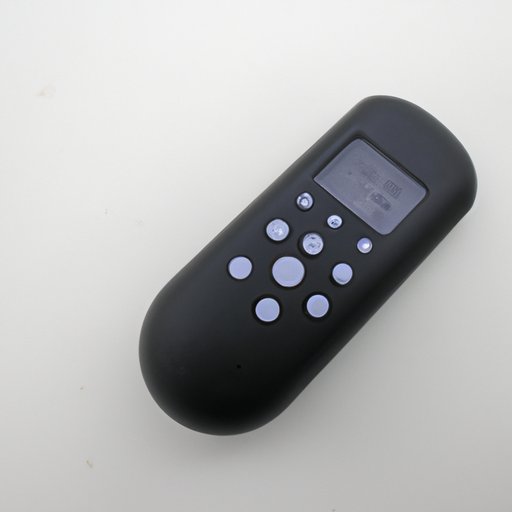Introduction
A remote control is an electronic device used to operate another device from a distance. It enables users to conveniently and wirelessly control a variety of devices such as televisions, DVD players, air conditioners, garage doors, and more. Remote controls come in a variety of shapes and sizes, and can be powered by batteries or AC power. In this article, we will explore the different types of remote controls, their components, principles, history, and potential future.
What is a Remote Control?
A remote control is an electronic device used to operate another device from a distance. It enables users to conveniently and wirelessly control a variety of devices such as televisions, DVD players, air conditioners, garage doors, and more. Remote controls come in a variety of shapes and sizes, and can be powered by batteries or AC power.
Overview of the Different Types of Remote Controls
There are three main types of remote controls: infrared (IR), radio frequency (RF), and Bluetooth. Each type has its own advantages and disadvantages, so it’s important to understand the differences between them in order to make an informed decision when selecting a remote control.

Components of a Remote Control
The most common component of a remote control is an infrared (IR) transmitter. This device emits a beam of invisible light that carries data to the device being controlled. The receiver then interprets the signal and responds accordingly. Other components include a radio frequency (RF) transmitter and receiver, which use radio waves instead of light to transmit data, and a Bluetooth module, which uses radio waves to connect two devices.
Advantages and Disadvantages of Each Type of Remote Control
Infrared (IR) remote controls are the most common type of remote control. They are inexpensive, easy to use, and widely available. However, they do have some drawbacks, including the fact that they require line-of-sight to the device being controlled and can be disrupted by other sources of infrared light.
Radio frequency (RF) remote controls are more expensive than infrared ones, but they offer a greater range and do not require line-of-sight. However, they are prone to interference from other RF signals, and they require additional hardware to be installed on the device being controlled.
Bluetooth remote controls are the most expensive option, but they offer the greatest range and are the least susceptible to interference. They also require no additional hardware to be installed on the device being controlled. However, they are not as widely available as infrared and radio frequency remote controls.

Basic Principles of How a Remote Control Works
The basic principles of how a remote control works are fairly straightforward. First, a signal is transmitted from the remote control to the device being controlled. This signal contains information about what action should be taken. Then, the device receives the signal and interprets it. Finally, the device performs the requested action.
In the case of infrared (IR) remote controls, the signal is transmitted in the form of a beam of invisible light. This beam carries data to the device being controlled. The receiver then interprets the signal and responds accordingly. Radio frequency (RF) and Bluetooth remote controls work similarly, using radio waves instead of light to transmit data.
History of Remote Controls
The history of remote controls dates back to the early 1900s, when inventor Nikola Tesla demonstrated the first remote-controlled boat. Since then, remote controls have evolved significantly. Early remote controls used wires to connect the device to the controller, while modern remote controls use wireless technologies such as infrared, radio frequency, and Bluetooth.
In the 1950s, television manufacturers began incorporating remote controls into their products. These early remotes were large, bulky, and operated with vacuum tubes. Over time, remotes became smaller and more user-friendly. By the late 1990s, remote controls had become commonplace in homes around the world.
In recent years, advances in technology have enabled remote controls to become even more powerful and efficient. Voice activation and autonomous control are just two examples of the potential future of remote control technology.
Using a Remote Control
Using a remote control is relatively simple. Most remotes are designed with a few basic buttons that allow users to perform various functions. For example, the power button usually turns the device on or off, while other buttons may change the volume, channel, or input source.
To use a remote control, start by ensuring that the device being controlled is powered on. Point the remote towards the device and press the desired button. If all goes well, the device should respond accordingly. If it doesn’t, try repositioning the remote or replacing the batteries.

Potential Future of Remote Control Technology
As technology continues to advance, remote control technology is likely to become even more sophisticated. Autonomous control, for example, could enable users to program their remote to automatically perform certain tasks at specific times. Voice activation is another potential advancement, allowing users to control their devices simply by speaking commands.
Other potential advancements include gesture-based controls, which would allow users to control their devices by moving their hands in certain ways, and facial recognition, which could enable users to log into their devices simply by looking at them.
Conclusion
Remote controls are ubiquitous in today’s world, allowing users to conveniently and wirelessly control a variety of devices from a distance. There are three main types of remote controls—infrared, radio frequency, and Bluetooth—each with its own advantages and disadvantages. Understanding the basic principles of how a remote control works, along with its history and potential future, can help you make an informed decision when selecting a remote control.
(Note: Is this article not meeting your expectations? Do you have knowledge or insights to share? Unlock new opportunities and expand your reach by joining our authors team. Click Registration to join us and share your expertise with our readers.)
